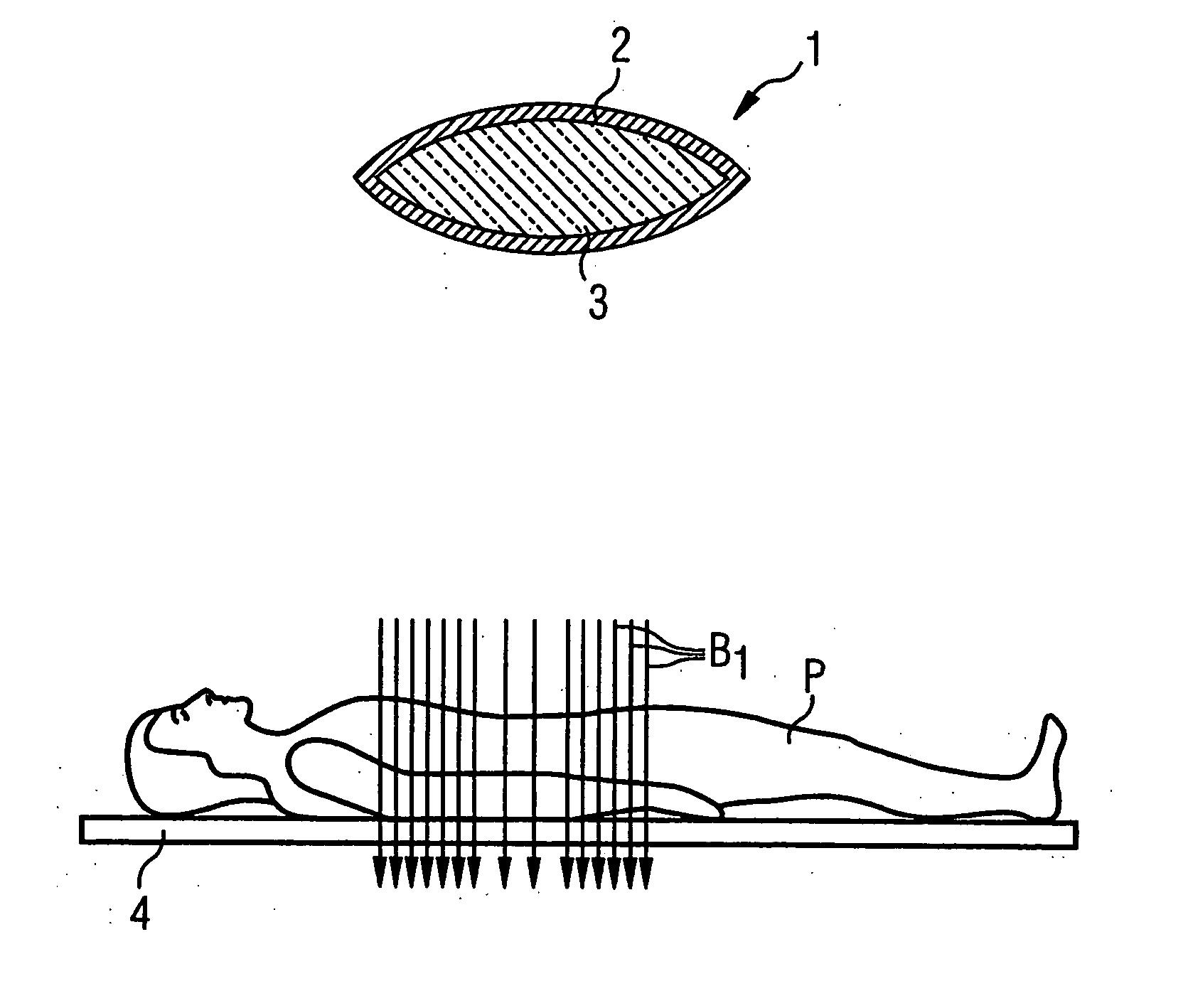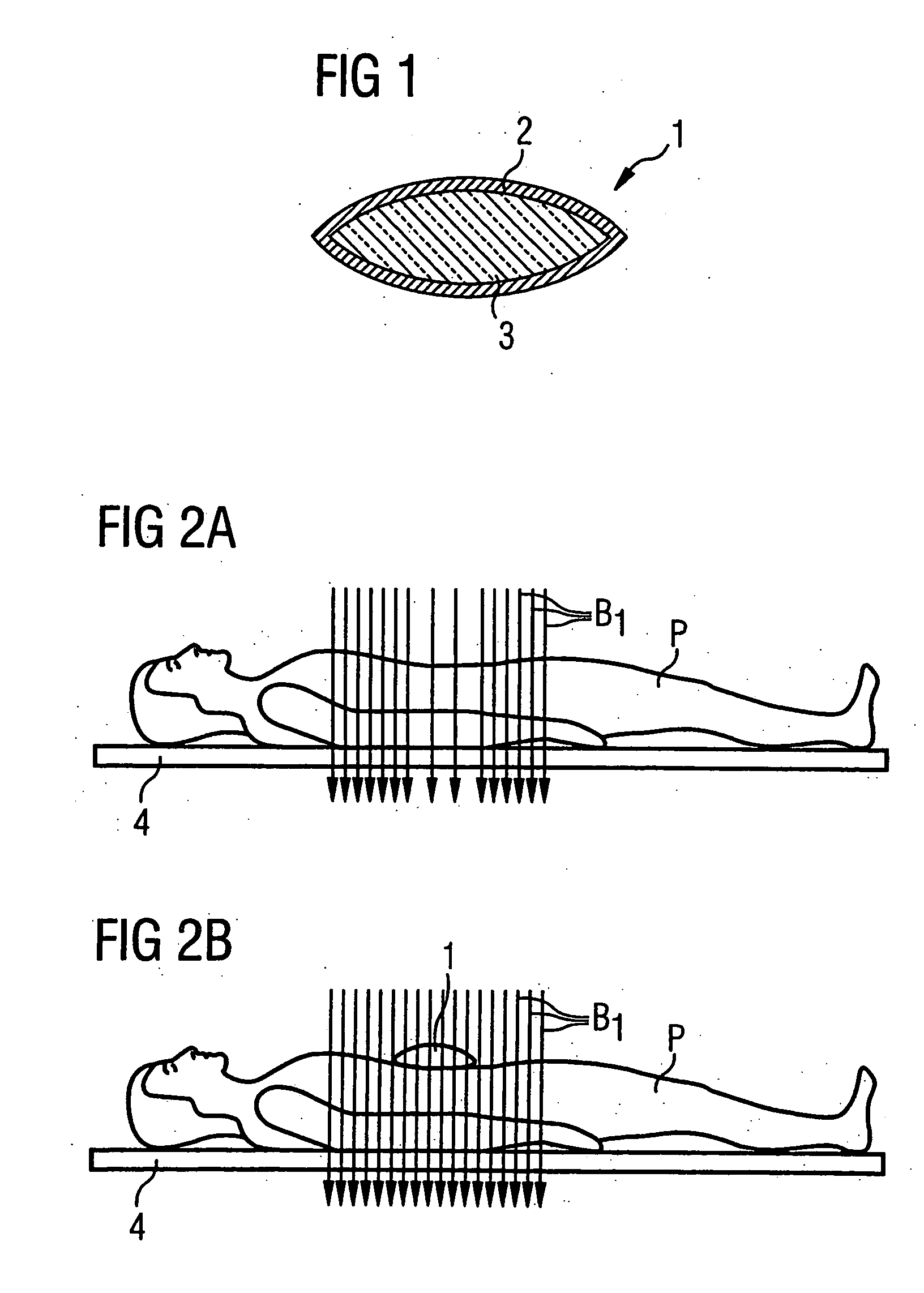Dielectric element and method for generating a magnetic resonance image therewith
- Summary
- Abstract
- Description
- Claims
- Application Information
AI Technical Summary
Benefits of technology
Problems solved by technology
Method used
Image
Examples
Embodiment Construction
[0025] The dielectric element shown in FIG. 1 is a dielectric pillow 1 having an outer shell 2 made from plastic film and a filling 3 that contains a paramagnetic substance. The plastic film of the outer shell 2 is a biocompatible material that is relatively thin but nevertheless sufficiently stable to prevent escape of the filling 3 contained therein. The plastic film of the outer shell 2 is preferably fused all around.
[0026] In use, the dielectric pillow 1 can be covered with a washable pillowcase that can be changed before use of the dielectric pillow 1 with different patients. The plastic film of the outer shell 2 can advantageously by disinfected with typical means.
[0027] In the exemplary embodiment, the filling 3 is an aqueous sodium polyacrylate gel that incorporates a gadolinium complex as a paramagnetic substance. This special filling 3 has the advantage that it is completely safe for the patient, in addition to the desired properties of effecting homogenization of the tr...
PUM
| Property | Measurement | Unit |
|---|---|---|
| Percent by mass | aaaaa | aaaaa |
| Percent by mass | aaaaa | aaaaa |
| Percent by mass | aaaaa | aaaaa |
Abstract
Description
Claims
Application Information
 Login to View More
Login to View More - R&D
- Intellectual Property
- Life Sciences
- Materials
- Tech Scout
- Unparalleled Data Quality
- Higher Quality Content
- 60% Fewer Hallucinations
Browse by: Latest US Patents, China's latest patents, Technical Efficacy Thesaurus, Application Domain, Technology Topic, Popular Technical Reports.
© 2025 PatSnap. All rights reserved.Legal|Privacy policy|Modern Slavery Act Transparency Statement|Sitemap|About US| Contact US: help@patsnap.com



